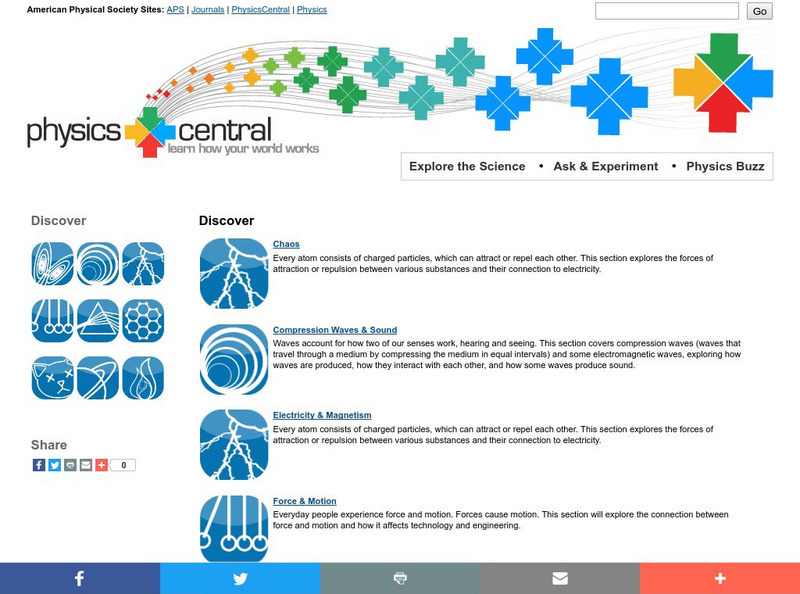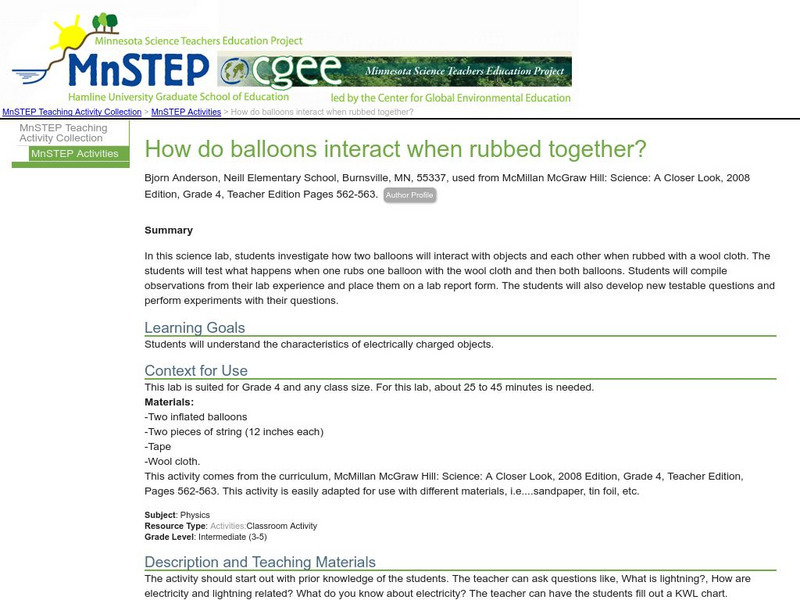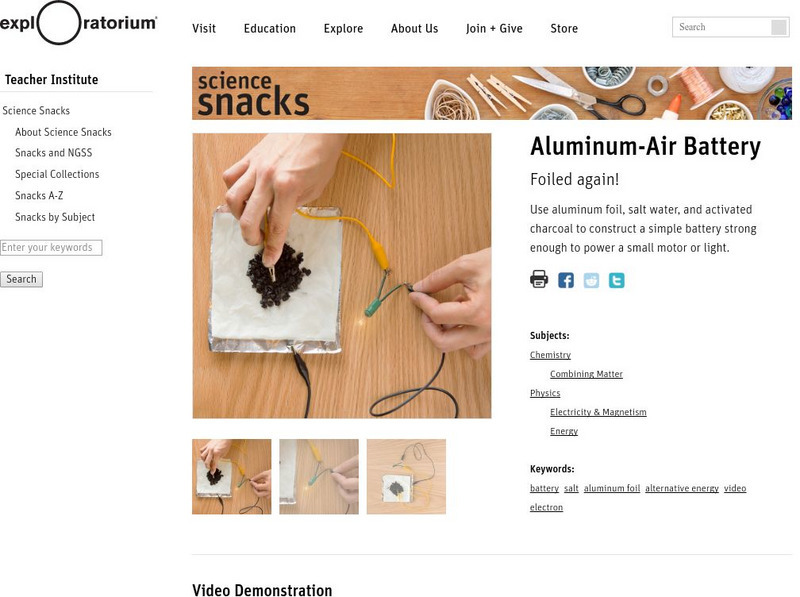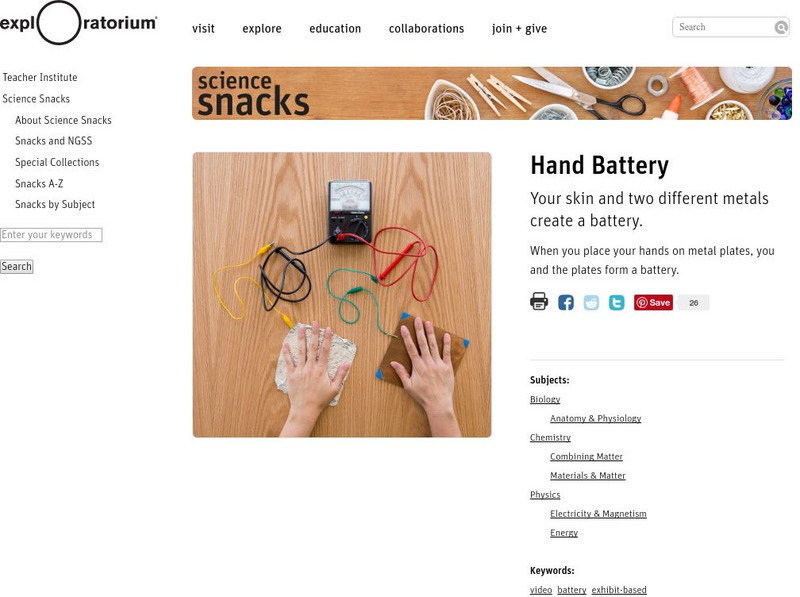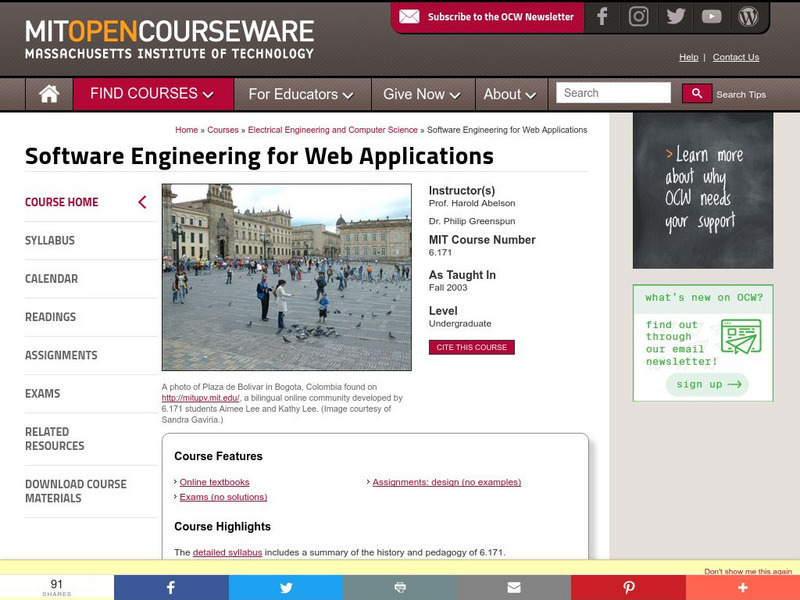TryEngineering
Try Engineering: Series and Parallel Circuits
The core of this lesson plan is simple circuits and the differences between parallel and series circuit design. Students perform experiments to test the differences between the two circuit designs using low voltage light bulbs.
The Franklin Institute
The Franklin Institute: Edison's Lightbulb: History of Science and Technology
The Franklin Institute features a biography of Thomas Edison and a complete description of the light bulb as well as an experiment.
Exploratorium
Exploratorium: Science Snacks: Gel Electrophoresis
An activity to create gel electrophoresis on a budget! This activity has students building their own gel electrophoresis and then using electricity to separate the dyes.
Science and Mathematics Initiative for Learning Enhancement (SMILE)
Smile: Qualitative Coulomb's Law Lesson
A detailed lesson plan for helping learners to qualitatively experience the force versus distance relationship of Coulomb's law.
PBS
American Experience: Technology Timeline: 1752 1990
Short descriptions of important technological innovations produced in America and the date of their introduction.
Texas Instruments
Texas Instruments: Lemon "Juice"
"Juice" is a slang term sometimes used for electricity. Batteries are made up of one or more cells. Cells often consist of two different materials in a solution that are connected to each other by a wire. In this experiment, you will...
National High Magnetic Field Laboratory
Magnet Academy: Oersted's Compass
Recreate the discovery by Hans Christian Oersted about the relationship between electricity and magnetism in this very simple experiment.
Physics Central
American Physical Society: Physics Central: Discover Homepage
Link to nine major physics topics and dig deeper into the content. Find out about the work of scientists in each field and see example physical science experiments.
Science Education Resource Center at Carleton College
Serc: How Do Balloons Interact When Rubbed Together?
Students investigate how two balloons interact with objects and each other when rubbed with a wool cloth. The students will also develop new testable questions and perform experiments to further their learning.
Other
University of Delware: Franklin and Friends
Using historically significant documents and photos from its collection, this exhibit probes the various interests of Franklin and the influential friends that shared his interests.
Other
K 3 Learning Pages: Web Resources Thunderstorms
Check out this comprehensive list of web resources on thunderstorms and safety. Students and teachers will benefit from the links found on this site.
Exploratorium
Exploratorium: Science Snacks: Modulated Coil
Can you hear a magnet? In this activity you will be able to transfer the sound from your iPhone, iPod or radio to a cassette-tape player.
Exploratorium
Exploratorium: Science Snacks: Aluminum Air Battery
Create a battery that is strong enough to power a light or a small motor in this activity. Activity uses simple materials such as: aluminum foil, salt water, and charcoal to make this battery.
Exploratorium
Exploratorium: Science Snacks: Hand Battery
In this activity students will create a battery by placing their hands on two different metal plates.
Science Buddies
Science Buddies: Sliding Light: How to Make a Dimmer Switch With a Pencil
In this electronics science fair project, students will make a simple dimmer switch and investigate the relationship between the resistance in the circuit and the amount of light produced. The Science Buddies project ideas are set up...
Massachusetts Institute of Technology
Mit: Open Course Ware: Software Engineering for Web Applications
This course gives students some experience in dealing with the challenges that are unique to web applications, such as concurrency and security risks.
National High Magnetic Field Laboratory
Magnet Academy: Robert Millikan
Robert Andrews Millikan was a prominent American physicist who made lasting contributions to both pure science and science education. He is particularly well known for his highly accurate determination of the charge of an electron via...
MadSci Network
Mad Scientist Network: Nonproduction of Oxygen
From the Mad Scientist Network, this page (and its accompanying answer page) use a question and answer format to help explain the results of an electrolysis of water experiment. Helpful tips for performing such an experiment are given.
Science and Mathematics Initiative for Learning Enhancement (SMILE)
Smile: Electrostatics
From the Science and Mathematics Initiative for Learning Enhancement project at the Illinois Institute of Technology. A teacher lesson plan which includes several Van de Graaff generator demonstrations and some station-style labs....
PBS
Pbs Teachers: Saltwater Tester
Explore circuits and the flow of electricity. Create a saltwater tester using a battery and electrical buzzer.
Smithsonian Institution
Lemelson Center: Spark!lab: Build a Speaker
Learn how to build your very own speaker with items usually found around the house. Follow step-by-step instructions and discover how to use your speaker to listen to the radio.
University of California
University of California: 1895 1923 Mrs. Ayrton
This article, "Reminiscences written by A. P. Trotter, President of The Institution of Electrical Engineers," recounts the author's appreciation for the work of Mrs. Hertha Ayrton, a brilliant experimental scientist who made significant...
ClassFlow
Class Flow: Circuit Conductors
[Free Registration/Login Required] This unit builds on children's previous practical experience of making circuits and extends their understanding of circuits, conductors and insulators and the need for a complete circuit in order for a...
National High Magnetic Field Laboratory
Magnet Academy: James Joule
James Prescott Joule experimented with engines, electricity and heat throughout his life. Joule's findings resulted in his development of the mechanical theory of heat and Joule's law, which quantitatively describes the rate at which...







